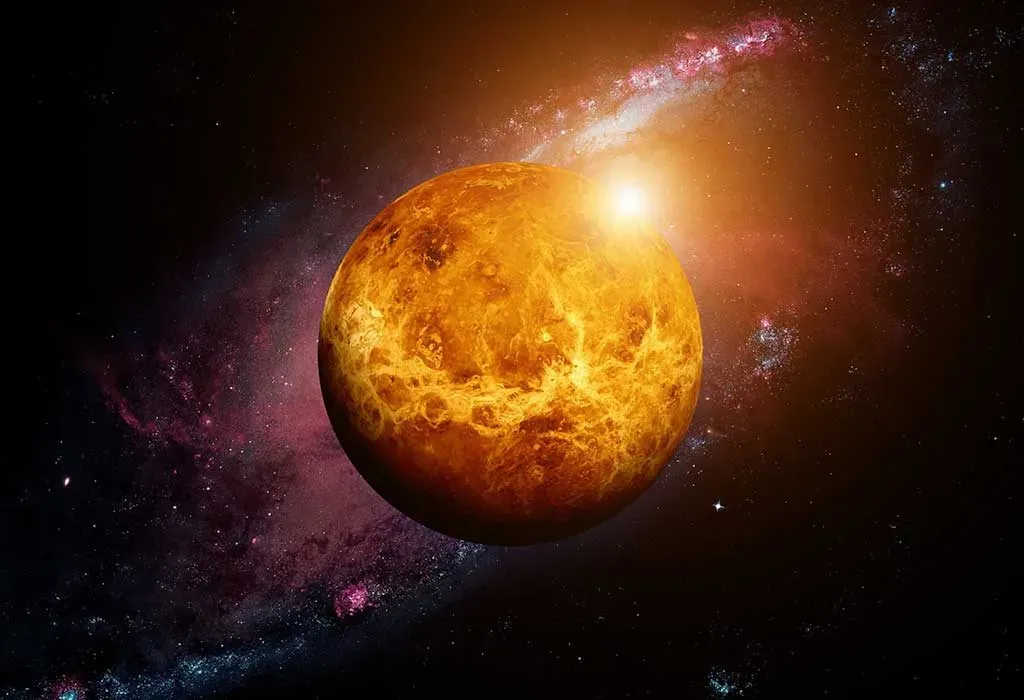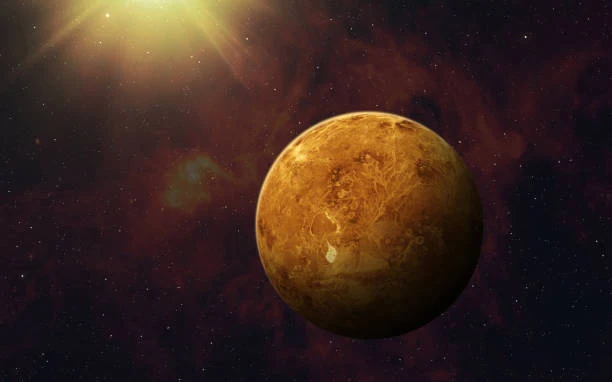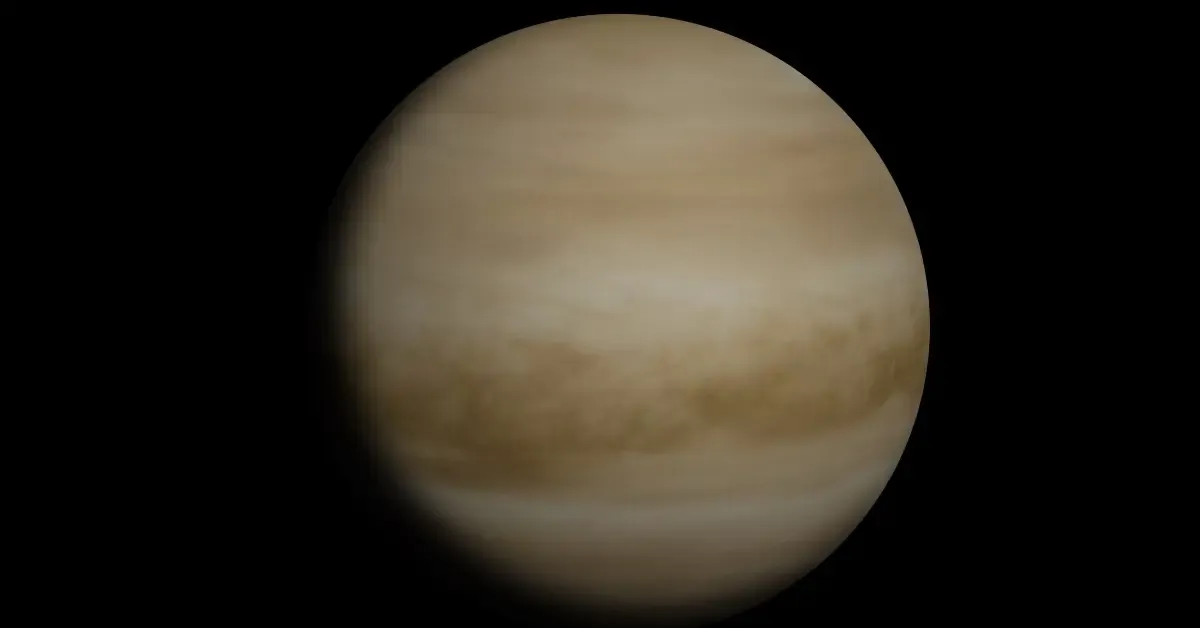Venus, the second planet from the Sun, is much of the time referred to as Earth's "sister planet" because of its comparative size and mass. Named after the Roman goddess of affection and magnificence, Venus shows one-of-a-kind qualities.
Its sluggish retrograde revolution, requiring 243 Earth days, prompts a day longer than its year. With outrageous temperatures coming to 464°C (867°F), Venus has a thick climate made chiefly out of carbon dioxide, causing an out-of-control nursery impact. Brutal circumstances, including high barometrical tension and acidic mists, make surface investigation testing difficult.
Venus, noticeable as the "Night Star" or "Morning Star," stays a subject of logical review to grasp its complicated environment and geographical highlights.
Let's Explore 50 Interesting Facts about Planet Venus
Venus is noticeable not long before dawn or after nightfall, thus its namesake, the "Morning Star" or the "Night Star."
The closest planet in our nearby planet group to Earth is Venus, which is found two planets from the Sun.
Venus is comparable in size to Earth, with a breadth of around 12,104 kilometers (7,521 miles), which is roughly 95% of Earth's measurement.
Most of the planets in the planetary group, including Earth, turn on their tomahawks the other way from Venus. It turns from east to west in a way known as retrograde revolution.
On Venus, a day is longer than a year; a full pivot on Venus' hub takes around 243 Earth days.
Also Read: 30 Motivational Facts About Virat Kohli
Venus, then again, has a more limited year than Earth since it just requires 225 Earth days to finish one circle of the Sun.
Venus has a thick climate that is basically comprised of carbon dioxide and sulfuric, corrosive mists. It turns into the most blazing planet in our planetary group subsequently, with surface temperatures as high as 465 degrees Celsius (869 degrees Fahrenheit), because of an out-of-control nursery impact.
The outer layer of Venus is rough and contains huge volcanic fields, mountains, and good country locales. The planet has more volcanoes than some other planets in our planetary group.
Venus is quite possibly the most splendid thing in the night sky on account of its nearby closeness to Earth and its reflected mists.
Venus has stages that might be seen from Earth, going from sickle to full, very much like the Moon. This is because it goes around the sun inside the circle of the Earth.
Also Read: 30 Fun And Amazing Facts About Rohit Sharma
From the Earth, Venus occasionally gets across the Sun's surface. The accompanying two travels, in 2117 and 2125, will be the latest, having occurred in 2004 and 2012.
Venus takes her name from the Roman goddess of magnificence and love.
NASA's Sailor 2 shuttle turned into the primary effective interplanetary mission when it visited Venus in 1962.
Venus' air applies tension at its surface, which is multiple times more noteworthy than that of Earth since it is multiple times denser than Earth's climate.
Venus has no natural satellites (moons).
Also Read: 30 Interesting Facts About The James Webb Space Telescope
In 1610, Galileo turned into the first individual to utilize a telescope to notice Venus. He saw that Venus encounters lunar-like stages.
Venus doesn't have an overall megnetic field like Earth does.
Venus seems to travel in reverse overhead at explicit focuses during its circle, a peculiarity known as retrograde movement.
Sulfuric corrosive, the essential part of Venus' thick mists, shapes a profoundly reflecting covering that adds to the planet's splendor overhead.
During the 1960s and 1970s, the Soviet Association did a few missions to Venus, for example, the Venera program, which was effective in putting down many tests on the world's surface.
Also Read: 30 Interesting Facts About Cryptographic Mathematics That Will Shocked You
NASA's Magellan mission during the 1990s utilized radar to plan the outer layer of Venus, uncovering insights regarding its geography.
In its upper climate, twists on Venus can arrive at rates of up to 360 km/h (224 miles an hour), which is unimaginably quick.
Venus pivots on an alternate timetable. Venus has more limited days than years because of its fast pivot around the Sun, which makes up for its sluggish turn on its hub.
Venus' super climate, which incorporates high temperatures and pneumatic stress, makes it hard for space apparatus to remain in the world's surface for an extensive measure of time.
Venus' air and environment were researched by the European Space Organization's Venus Express mission, which was sent off in 2005.
Also Read: 30 Unique Surprising About Number 2
Venus' thick climate traps heat, causing a nursery impact that is generally liable for the planet's exceptional temperatures.
Any fluid water that might have once been on Venus' surface has since a long time ago dissipated because of the planet's nearness to the Sun and the following outrageous temperatures.
Venus, rather than Earth, could encounter an uncommon event known as a mantle turn, in which the planet's external shell and center pivot independently.
There are tremendous volcanic fields on Venus, and a portion of the planet's volcanoes is large to such an extent that they are designated "Coronae."
Venus' lit bow stage can change in size and structure over the long haul, causing variations in the planet's brilliance.
Also Read: 30 Amazing Facts About Number 1
Venus' sidereal day, which is its turn period for different stars, is longer than its sun powered day, still up in the air by the Sun.
Venus has unforgiving circumstances, yet researchers have felt that it could have once had a more charming environment. A few missions are intended to examine this chance.
Venus has no detectable water ice on its surface, rather than specific different planets in our planetary group.
Venus should be visible in the first part of the day and night skies, despite the fact that its splendor changes based on where it is in its circle.
Venus' climate likewise incorporates measures of nitrogen, water, fume, and different gases, notwithstanding carbon dioxide.
Also Read: 30 Sensational Facts About Salvador Dalí
Venus' thick environment helps spread heat, hence there is little contrast in temperature between its day in and day out sides.
Around 90% of Earth's gravity is applies to Venus.
Sent off in 1978, NASA's Trailblazer Venus mission yielded significant data about the surface and air of Venus.
Contrasted with different planets in our planetary group, Venus' circle is the most round.
Venus was known as the morning and the night stars by ancient social orders like the Maya and Babylonians, yet they were ignorant that it was indeed the very same planet.
Also Read: 30 Incredible Facts About Pablo Picasso
Venus reflects more than 70% of the daylight that strikes it because of its high albedo.
Cosmologists have been reading up on Venus for a really long time, and the planet's stages assumed a huge part in supporting Copernicus' heliocentric hypothesis.
Numerous hypotheses have been advanced, however, the reason for Venus' retrograde turn is still being scrutinized in science.
Maxwell Montes is the most elevated top on Venus, and a portion of its mountains is similarly tall as those on the planet.
Venus pivots in reverse, consequently, despite the fact that daily there is longer than a year, it is as yet more limited than an evening.
Also Read: 20 Legendary Facts About Kobe Bryant
Quite possibly microbial life exists in Venus' upper mists, where the environment is more calm, as per a few researchers.
Venus is a typical wellspring of gravitational guidance utilized by rockets to speed up and change their direction on interplanetary missions.
This region of Venus' good countries bears the name of the Greek goddess Aphrodite.
Venus doesn't seem to have areas of strength for an attractive field, despite the fact that it doesn't have a worldwide attractive field.
Venus is alluded to as the "Night Star" when it is noticeable in the western sky after dusk and as the "Morning Star" when it is apparent in the eastern sky before dawn.
Also Read: Barack Obama Inspiring African-Americans That Shaped History
Posted By F A C T O L O G Y
"Factology " is a Fact Blog. Here you can find all kinds of facts and blogging-related content My name is Mihir Patel and I am a passionate blogger. Blogging has been my creative outlet for several years now, and I love the freedom it gives me to express myself and share my ideas with the world. Through my blog, I write about a wide range of topics that interest me, including technology, science, and space.
Tags: Planet Facts








